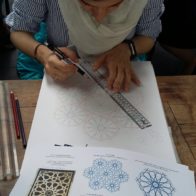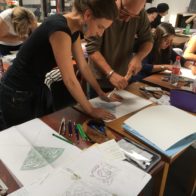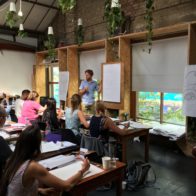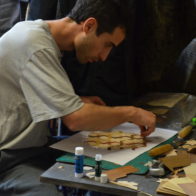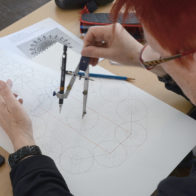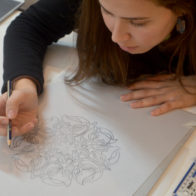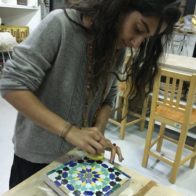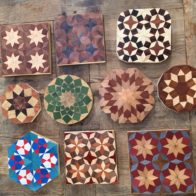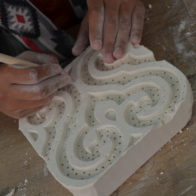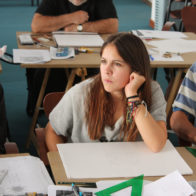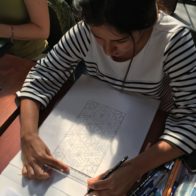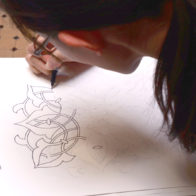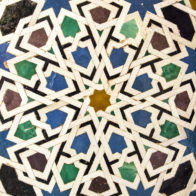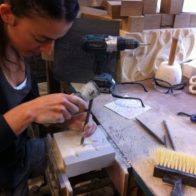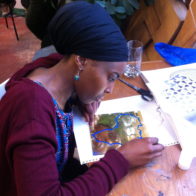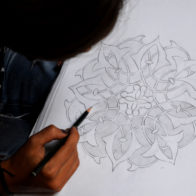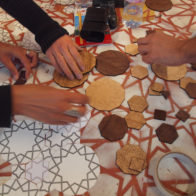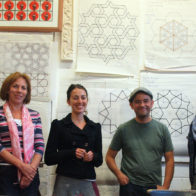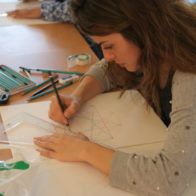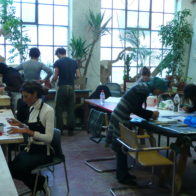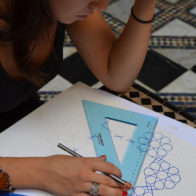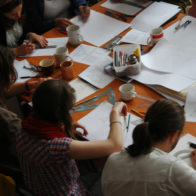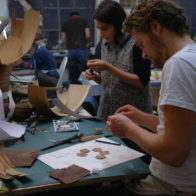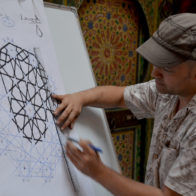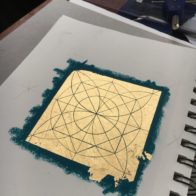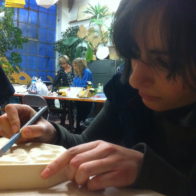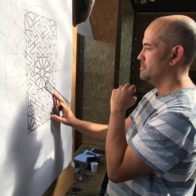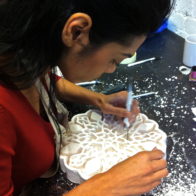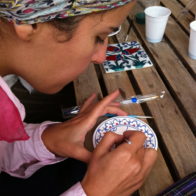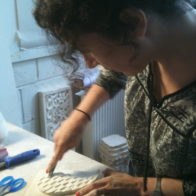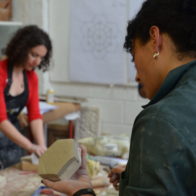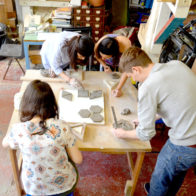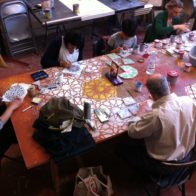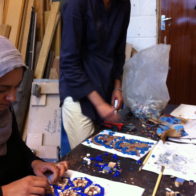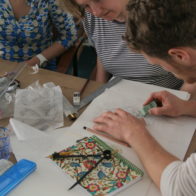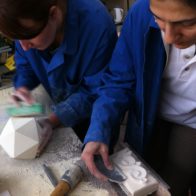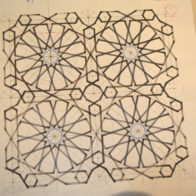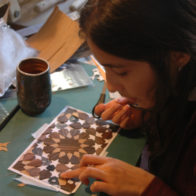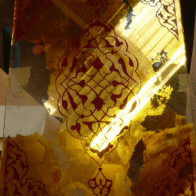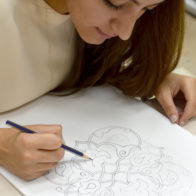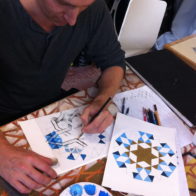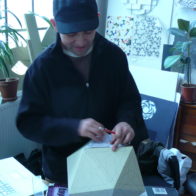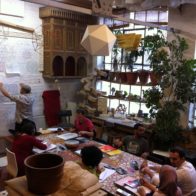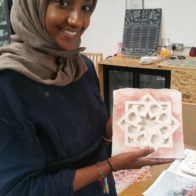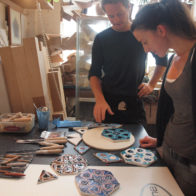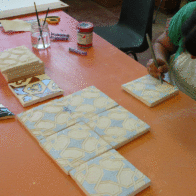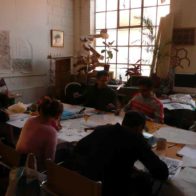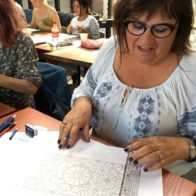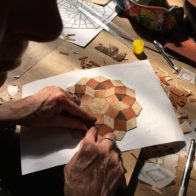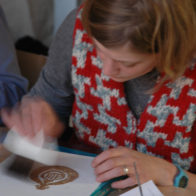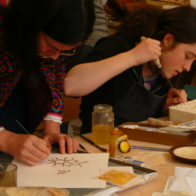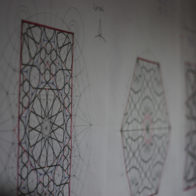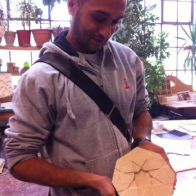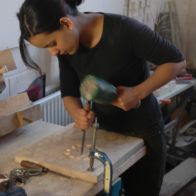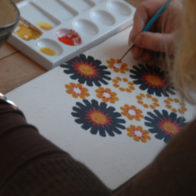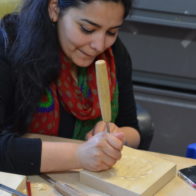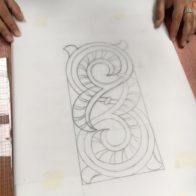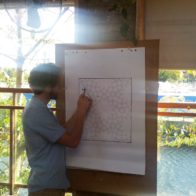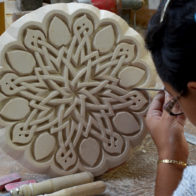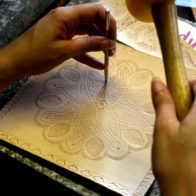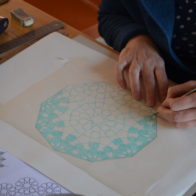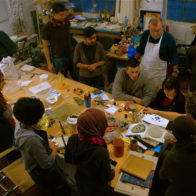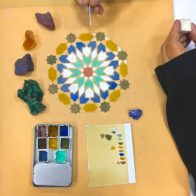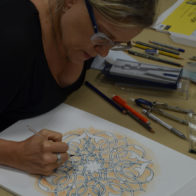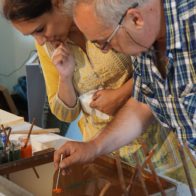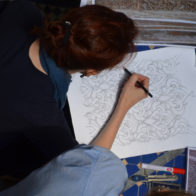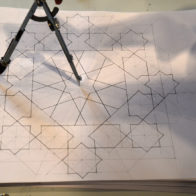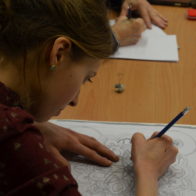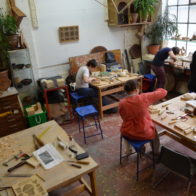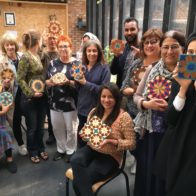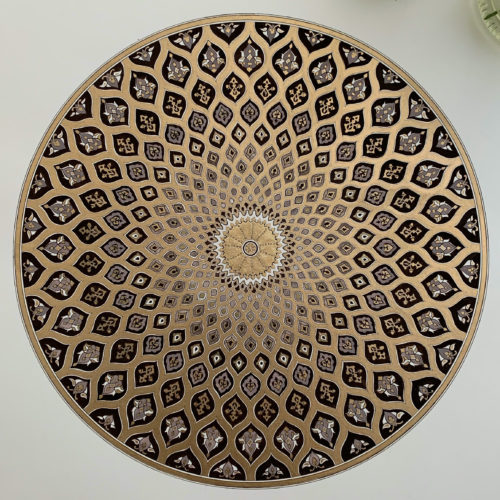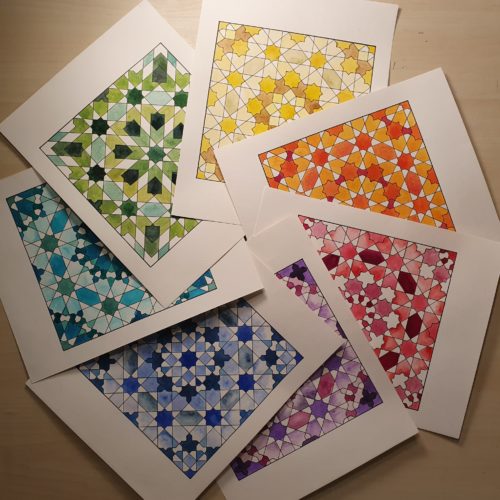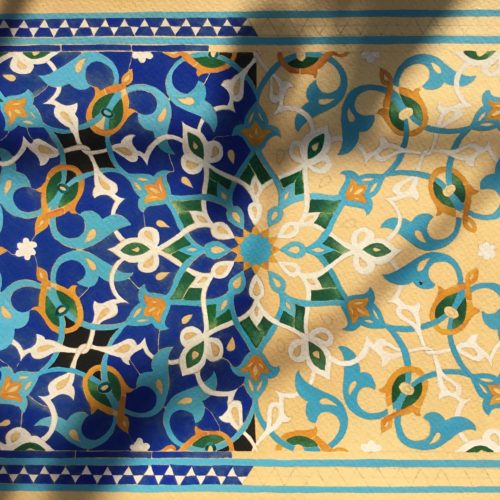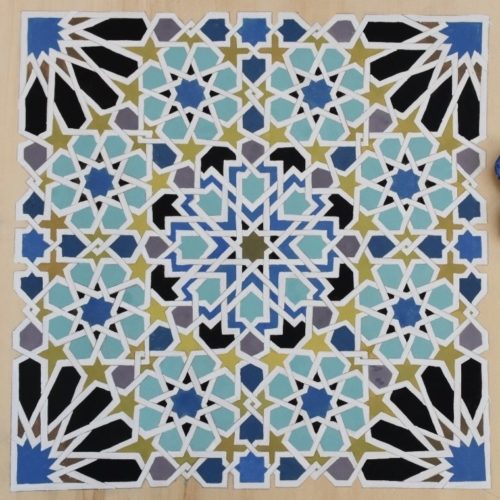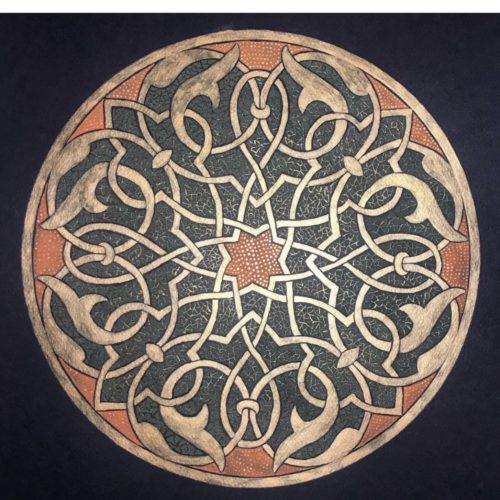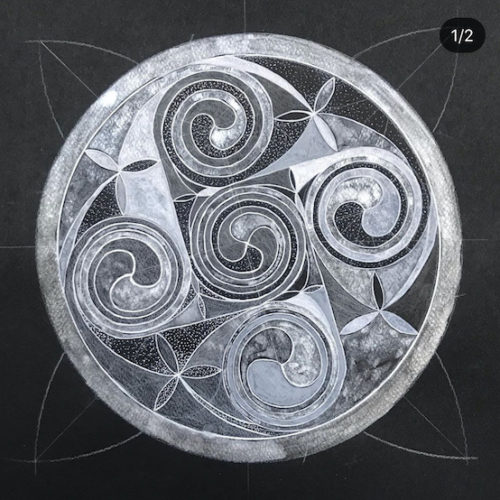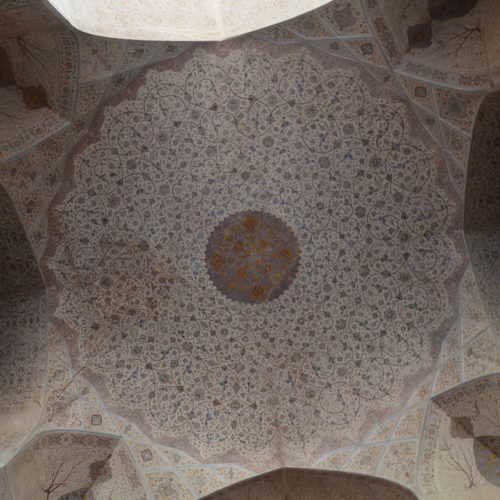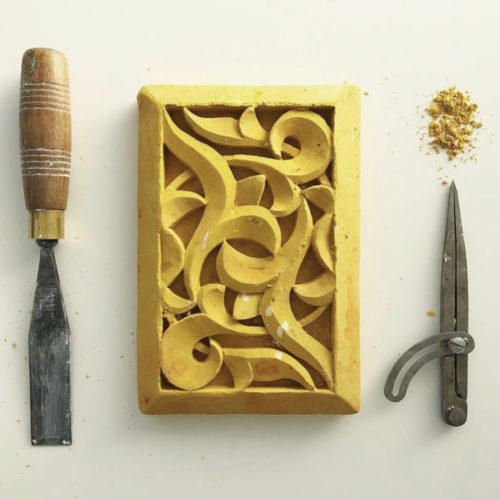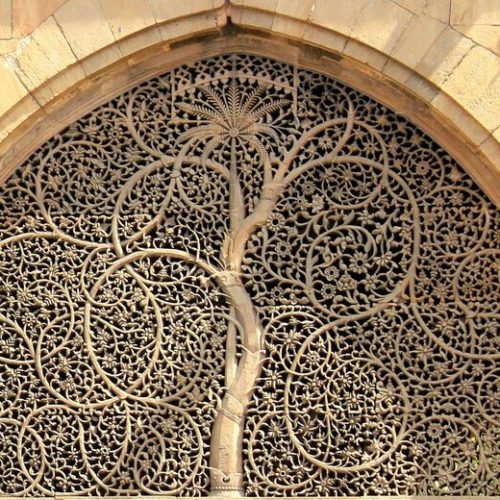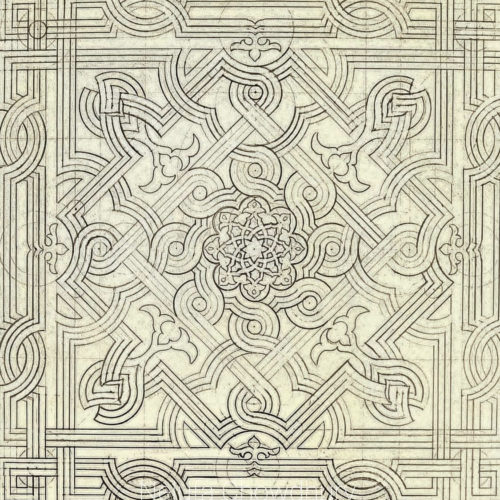This ONLINE course will cover a pattern analysed by Adam Williamson.
Learn to draw this stunning 6 fold Pattern from the Ottoman Rustem Pasha Camii.
To gain access to the course pack click the link below.
Please wait after making the donation to be redirected to a page containing a dropbox link.
Rüstem Pasha served as Grand Vizier of the Ottoman Empire under Sultan Suleiman, and in 1563 he commissioned architect Mimar Sinan to build a mosque near Istanbul’s Grand Bazaar, now one of the city’s historic sites. Rüstem also commissioned for it a dazzling array of ceramic tiles painted with subtle and sophisticated patterns.
Decorating the spandrels and dado around the interior of the bazaar, this 12-fold composition is comprised of four continuous spirals woven into a radial rosette. The structure beneath its curvilinear geometry is a 6-fold division of the circle, also seen in chapters 1 and 3. The leaf-shaped motifs along the interwoven lines of the rosette are called rumi motifs, a reference to Rūm (Anatolia). This motif dates back to the 4th century BCE, and was later developed by both the Uyghurs in the 9th century and the Seljuks in the 11th century CE.
Positioned at the heart of the rumi motif is the ‘pivotal ball’. Regardless of the length of the motif, its proportion will be defined by this circle. If a second motif is attached to the first, it will also revolve around the same ball. The motif can be drawn geometrically, exhibiting the characteristics of the Taoist yin-yang symbol.
In the center of the composition is a floral motif know a penc, which derives from penc berk (five petals) in Persian. It is rendered in three concentric rings, comprised of two outer rings of 12 double-lobed petals and a central curvilinear pattern, also of 12 petals. This motif is part of the Hatayi decorative canon that was introduced to Anatolia from middle Asia from origins found in ancient Chinese ceramics. The name Hatayi is associated with Herat, Afghanistan, the cultural center of the Timurids and a key trading station on the silk road.
The composition has been skilfully painted onto an Iznik tile, so named after the rural town of Iznik that nestles on a lakeside not farfrom Istanbul. It was there that in the early 16th century an “Imperial ware,” now called Iznik, was developed using a fritware (glass) body and high quartz content. The extremely durable results were unaffected by water, moisture, chemicals and temperature changes, and under their protective glaze, their colors have not faded over centuries.
The first stage in producing this masterpiece in ceramic was to draw the pattern on paper. Then the lines were pierced with tiny holes, through which the design could be transferred onto the tile with pigment ready to be hand painted before firing in the kiln.
 If your country doesn’t support PayPal or you have any issues please Email:
If your country doesn’t support PayPal or you have any issues please Email:
The course will require you to download the free app Zoom
REQUIRED equipment & materials
- A compass (recommended compass is the Rotring Master Bow)
- A ruler
- Cartridge paper – ideally A3 size
- Range of Pencils (6B-4H)
- Tracing paper
- Zero Eraser or equivalent
- Optional – Coloured pencils.
- Optional – Fine line drawing pens (useful to have, but not essential)






